空调系统是船舶的重要组成部分,尤其对于大型航运船舶,船员长期工作在相对狭窄的工作空间中,且经常面临各类极端天气,空调系统能够保障船员的身心健康。此外,对于某些高精度船舶电子设备,必须要保证设备的动作温度在可用的范围内,此时也离不开船舶空调系统。
本文针对大型VLCC船舶的空调系统进行研究,阐述了空调系统的关键部件和工作原理,并利用Matlab/Simulink仿真工具和数学建模的方法,对船舶空调系统进行仿真和优化设计。
1 船舶空调系统概述船舶空调系统的基本原理是向空调舱室内输送降温或升温处理的空气,同时排出等量的空气,改变空气的温、湿度,形成一个良性的循环。
船舶空调系统主要由压缩机、电机、换热器、蒸发器、管路、过滤器等构成。
船舶空调系统基本原理如图1所示。
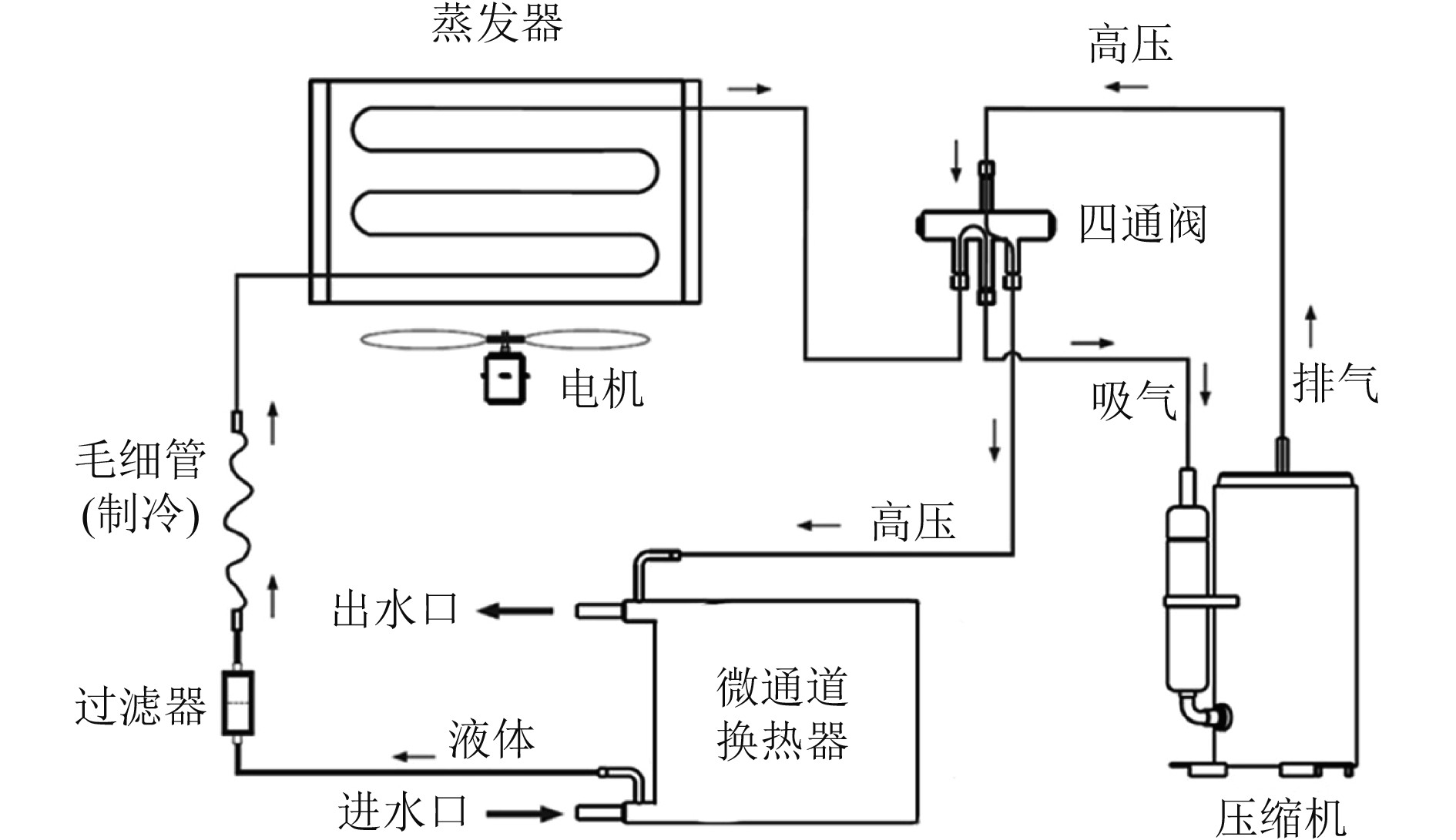
|
图 1 船舶空调系统的基本原理 Fig. 1 The basic principle of ship air conditioning system |
由于船舶特定的工作条件,船舶空调系统相较陆地建筑空调系统存在以下特殊的要求:
1)进行全球货物运输的船舶,工作环境包括低纬度和高纬度地区,气象条件十分悬殊,因此船舶空调系统的负荷工况变化很大,对空调系统的要求更高。
2)船舶舱室等内部结构的空间局促,必然会导致舱室内部的通风条件差,因此船舶空调系统在管路设计和通风条件设计上难度更大。
3)不同于陆地建筑空调系统,船舶空调系统的冷凝器可能直接采用海水和河水冷凝,需考虑冷凝器的防腐蚀特性。
4)处理冷凝器需具备防腐蚀特性,船舶空调系统长期处于海洋环境中,盐雾和湿度大,必须保证其他部件的防腐特性。
5)船舶受海浪等条件的影响,船体往往处在各种晃动中,不仅对于空调结构的可靠性有更高的要求,还要防止空调中冷凝器的冷凝水因船体晃动导致的断流风险。
2 船舶空调系统关键部件的数学建模 2.1 压缩机压缩机是船舶空调系统的制冷过程主要动力来源,常用的压缩机包括活塞式和回转式等[1],活塞式空调系统压缩机原理图如图2所示。

|
图 2 活塞式空调系统压缩机原理图 Fig. 2 Schematic diagram of a compressor for a piston air conditioning system |
船舶空调系统压缩机的制冷循环如图3所示。
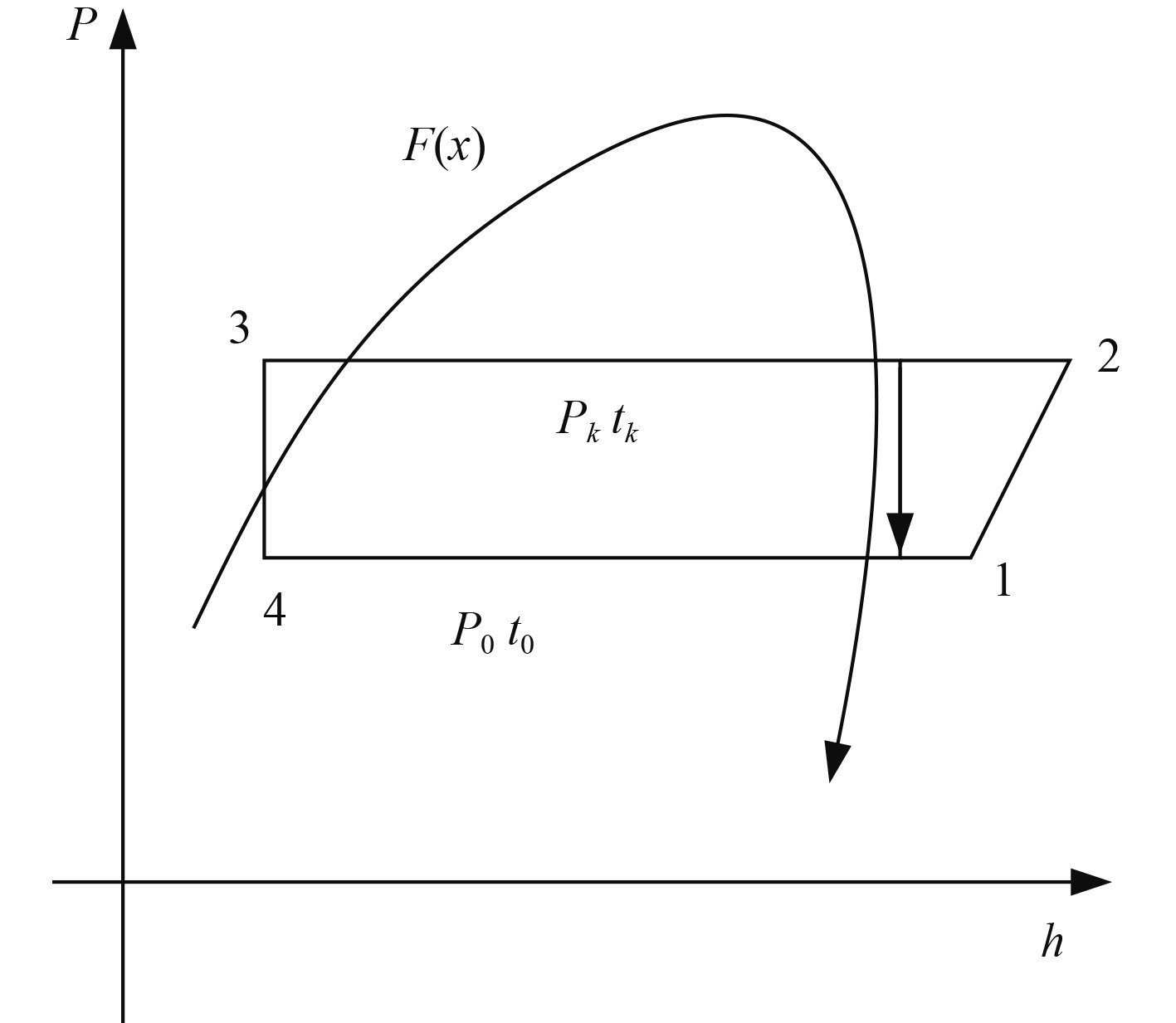
|
图 3 船舶空调系统压缩机的制冷循环 Fig. 3 Refrigeration cycle of a compressor for a marine air conditioning system |
分别对压缩机的几个关键参数建模。
1)排气量
| $ V = {\text{π}} pH\frac{{\left( {p - 2d} \right)}}{{2N - 1}} 。$ |
式中:
2)输气量
| $ {V_T} = 60nV{\eta _0} = {\text{π}} pH\frac{{\left( {p - 2d} \right)60n}}{{2N - 1}} 。$ |
式中:
| $ {\eta _0} = 0.966 - 0.89\left[ {{{\left( {\frac{{{P_2}}}{{{P_1}}}} \right)}^{\frac{1}{K}}} - 1} \right] 。$ |
式中:
3)流量
| $ {m_k} = {\eta _v}\frac{{{V_T}}}{{{v_{sk}}}}。$ |
式中,
压缩机制冷剂的状态方程为:
| $ p = \frac{{RT}}{{{v_{sc}} - b}} - \frac{1}{{{v_{sc}}\left( {{v_{sc}} + a} \right) + b\left( {{v_{sc}} - b} \right)}} 。$ |
式中:R为制冷剂的压力;T为气体常数[3],a和b与制冷剂的型值有关,用下式计算:
| $ \begin{gathered} a = 0.45\left( {\frac{{{R^2}T_{}^2}}{{{p_{}}}}} \right),\\ b = 0.077\frac{{R{T_{}}}}{{{p_{}}}} 。\\ \end{gathered} $ |
4)功率
考虑压缩机工作过程与环境之间的热交互,得到压缩机的功率为:
| $ {P_i} = \frac{k}{{k - 1}}{p_t}{V_s}\left[ {{{\left( {\frac{{{p_d}}}{{{p_s}}}} \right)}^{\frac{{k - 1}}{k}}} - 1} \right] 。$ |
式中:
5)压缩机扭矩
建立模型如下式:
| $ {M_1} = {M_p} + \sum\limits_{r = 1}^\infty {\left( {{A_v}\cos v{\omega _0}t + {B_v}\sin v{\omega _0}t} \right)}。$ |
式中:
冷凝器的工作原理是将经过压缩机压缩的高温高压的汽态制冷剂冷却[4],冷凝水被加热的同时,制冷剂降温。
冷凝器的工作原理如图4所示。
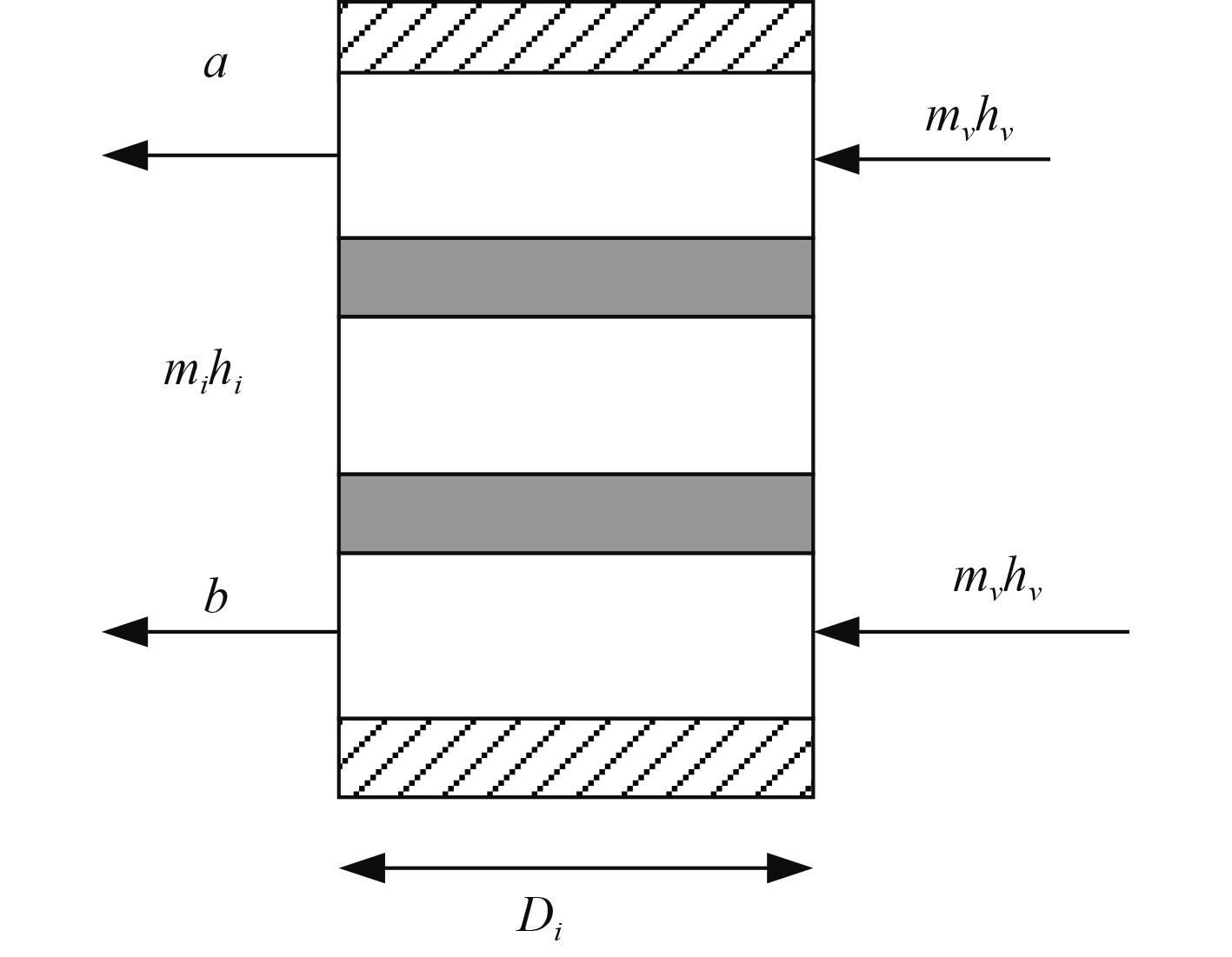
|
图 4 冷凝器的工作原理示意图 Fig. 4 Schematic diagram of the working principle of the condenser |
根据冷凝器的能量守恒原理,建立冷凝器函数模型为:
| $ \begin{gathered} \left( {{m_\nu }{h_\nu } + {m_i}{h_i}} \right) + {\text{π}} {D_i}\delta z\left( {{T_z} - {T_r}} \right) = \\ \left( {{m_\nu } + \frac{{{\rm{d}}{m_\nu }}}{{{\rm{d}}z}}\delta z} \right)\left( {{h_\nu } + \frac{{{\rm{d}}{h_\nu }}}{{{\rm{d}}z}}\delta z} \right) + \left( {{m_i} + \frac{{{\rm{d}}{m_i}}}{{{\rm{d}}z}}\delta z} \right)\left( {{h_i} + \frac{{{\rm{d}}{h_i}}}{{{\rm{d}}z}}\delta z} \right)。\\ \end{gathered} $ |
式中:
冷凝器管路的换热面积为:
| $ A = {\text{π}} {D_w}\delta z \text{,} $ |
可得能量守恒方程:
| $ {m_w}{c_p}\frac{{{\rm{d}}{T_w}}}{{{\rm{d}}z}}=-{\text{π}}{D_w}\Delta T。$ |
式中:
结合船舶空调系统关键部件的数学模型,在Matlab平台中建立仿真模型,仿真模块的数据构成如图5所示。
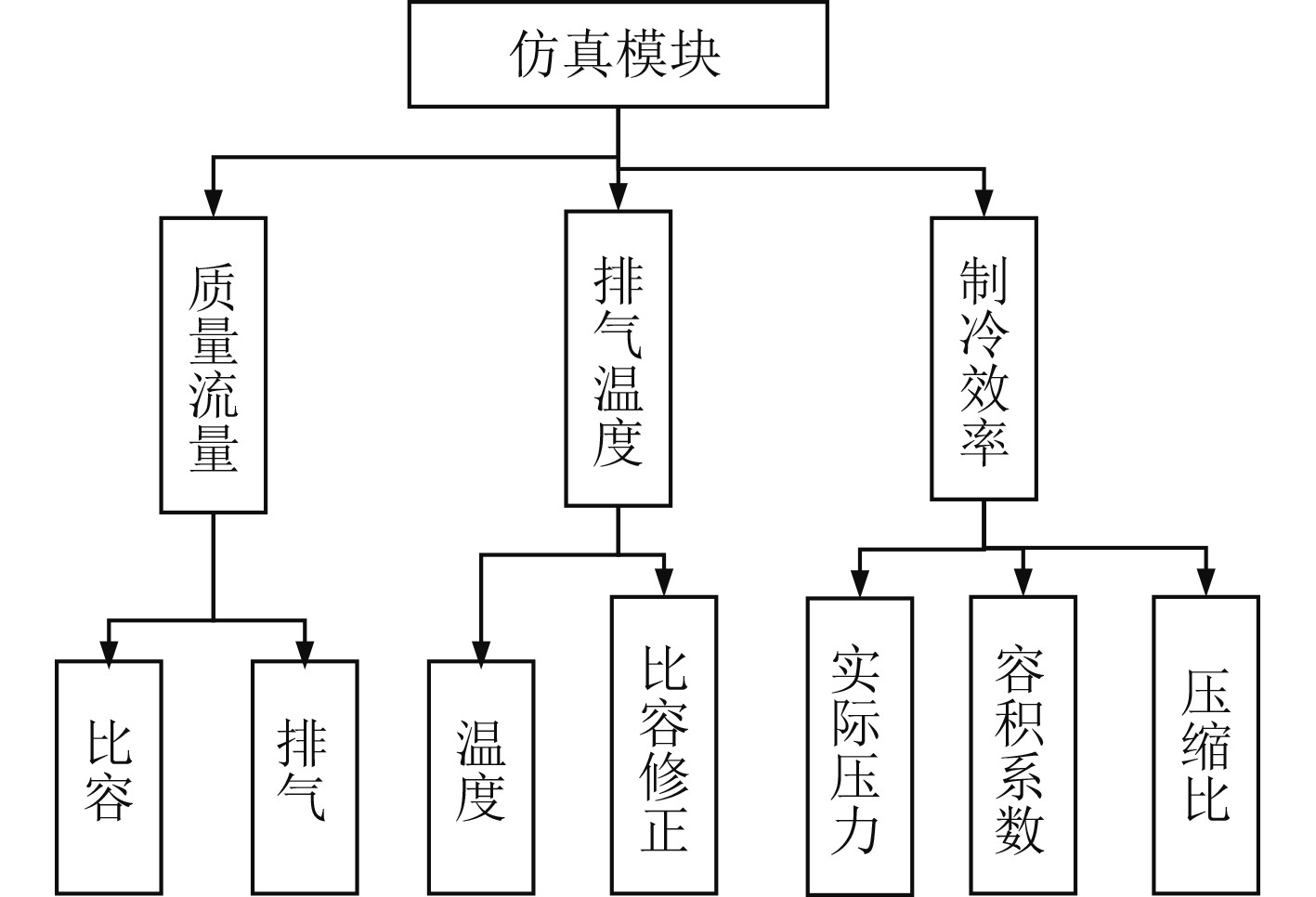
|
图 5 船舶空调系统仿真模块数据构成 Fig. 5 Data composition of ship air conditioning system simulation module |
系统使用Microsoft的Access数据库技术完成空调系统仿真的数据存在和交换。在客户端程序中设计SaveQuery类插件保障数据通信。
基于Matlab的船舶系统仿真数据通信程序如图6所示。

|
图 6 基于Matlab的船舶系统仿真数据通信程序图 Fig. 6 Ship system simulation data communication program diagram based on Matlab |
在仿真过程中,本文选用的船用压缩机制冷剂为R22,压缩机的直径为20 cm,电机转速为2000 r/min,压缩机的排气量为0.25 m3/s[6],仿真过程的边界条件如表1所示,仿真得到的空调系统冷凝器温度变化曲线如图7所示。
|
|
表 1 空调系统仿真边界条件 Tab.1 Air conditioning system simulation boundary conditions |
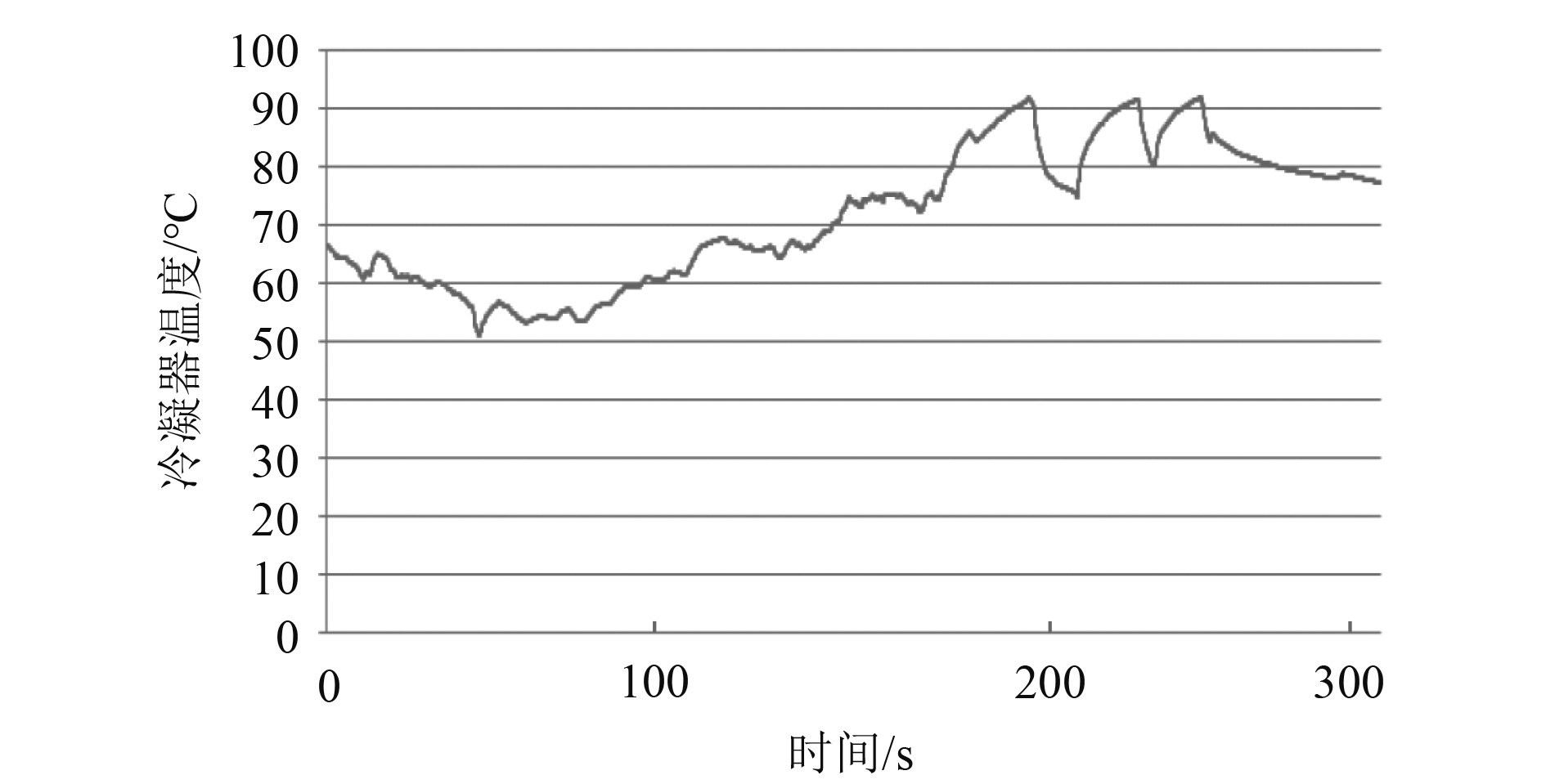
|
图 7 仿真得到的空调系统冷凝器温度变化曲线 Fig. 7 Temperature variation curve of the condenser of the air conditioning system obtained by simulation |
船舶空调系统的性能对于船舶至关重要,空调系统的关键部件包括压缩机、冷凝器等,本文结合经验与公式,对船舶空调系统的关键部件进行数学建模,并基于Matlab软件进行了空调系统的仿真与优化。
| [1] |
毕监龙. 船舶空调通风系统减振降噪研究[J]. 船舶物资与市场, 2022, 30(10): 41-43. |
| [2] |
徐成. 船舶制冷与空调装置常见故障诊断与对策方法[J]. 中国水运(下半月), 2022, 22(10): 35-37. XU Cheng. Common fault diagnosis and countermeasures of marine refrigeration and air conditioning unit[J]. China Water Transport (Second half of the month), 2022, 22(10): 35-37. |
| [3] |
曾建, 杨祥国, 刘自然, 等. 基于模拟退火的粒子群算法的船舶空调系统能耗优化研究[J]. 中国修船, 2022, 35(3): 34-38. ZENG Jian, YANG Xiang-guo, LIU Zi-ran, et al. Study on energy consumption optimization of marine air conditioning system based on simulated annealing particle swarm optimization[J]. China Ship Repair, 2022, 35(3): 34-38. |
| [4] |
常烜宇, 魏小栋. 船舶舱室环境控制系统制冷空调技术应用现状[J]. 中南大学学报(自然科学版), 2021, 52(6): 1924-1933. CHANG Xuan-yu, WEI Xiao-dong. Application status of refrigeration and air conditioning technology in ship cabin environmental control system[J]. Journal of Central South University (Science and Technology), 2021, 52(6): 1924-1933. |
| [5] |
陈文华, 黄伟稀, 梁赟. 船舶空调系统及设备节能运行技术研究[J]. 流体机械, 2021, 49(1): 97-104. CHEN Wen-hua, HUANG Wei-xi, LIANG Yun. Research on energy-saving operation technology of marine air conditioning system and equipment[J]. Fluid Machinery, 2021, 49(1): 97-104. |
| [6] |
朱文兵, 阚安康, 曹丹, 等. 基于数值模拟的船舶空调舱室热舒适性分析[J]. 船舶工程, 2020, 42(11): 79-86. ZHU Wen-bing, KAN An-kang, CAO Dan, et al. Thermal comfort analysis of ship air conditioning cabin based on numerical simulation[J]. Ship Engineering, 2020, 42(11): 79-86. |
 2023, Vol. 45
2023, Vol. 45
